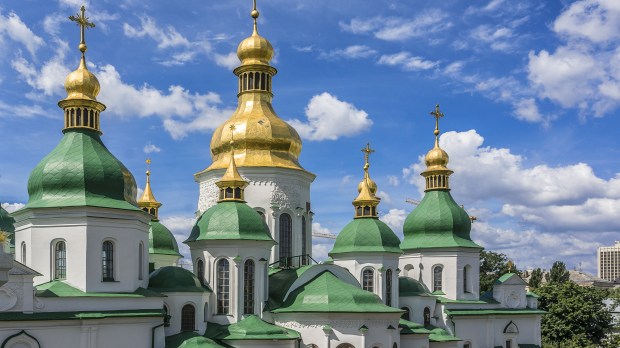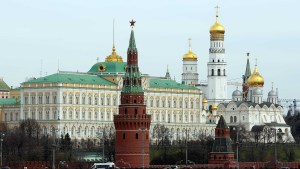The Russian invasion of Ukraine poses a threat to several historical cultural sites, including religious buildings, the United Nations said Friday.
Two ancient religious sites in Kyiv, the capital, and a historic area of the western city of Lviv, which includes several churches, are at risk of damage or destruction, said the UNESCO World Heritage Committee, which was holding a meeting in Saudi Arabia on September 15.
“Optimal conditions are no longer met to fully guarantee the protection of the Outstanding Universal Value” of the properties, the committee said. They are “threatened by potential danger due to the war.”
The sites are the 10th-century St. Sophia Cathedral and Kyiv-Pechersk Lavra (Monastery of the Caves) in Kyiv, and the historic center of Lviv.
Not only is there a risk that the sites would be attacked directly, they are also vulnerable to the shockwaves caused by the bombing of the two cities.
Kyiv, of course, has been subject to much bombing and strikes by drones. Lviv, near the Polish border, has largely been left alone so far.
Inclusion of the sites on the List of World Heritage in Danger recognizes that they have “remained under permanent threat since the start of the invasion on February 24, 2022,” UNESCO said. It also opens the door to additional financial and technical aid in order to implement new emergency measures. Ukrainian authorities already have taken “many actions” to protect their cultural property, the Committee stated.
Earlier, in January 2023, UNESCO added the Historic Center of Odesa, on the Black Sea, to the List of World Heritage in Danger.
From the 11th century: A history
Kyiv’s St. Sophia Cathedral was built in the 11th century under Prince Yaroslav the Wise. He was the son of St. Volodymyr, who accepted Christianity for the Principality of Kyivan Rus, over which he ruled. It was named after the Hagia Sophia (Holy Wisdom) in Constantinople, from whence came Kyiv’s new faith. Though it was renovated in the 16th century, it still contains the interior 11th-century mosaics and frescoes. Following the 1596 Union of Brest, the cathedral belonged to the Uniate Church, now known as the Ukrainian Greek Catholic Church. Today it is a museum.
The Kyiv-Pechersk Lavra is also thought to have been founded in the 11th century, when a monk from Mt. Athos named Anthony settled in a cave overlooking the Dnipro River. A community of disciples grew there, and a monastery was built by architects from Constantinople. In recent years, part of the Lavra complex has served as the principle monastery of the Ukrainian Orthodox Church of the Moscow Patriarchate, but because of the perceived support of the Moscow Patriarchate for Putin’s invasion, the Ukrainian government has been evicting the monks from the property.
Among the many saints buried at the lavra, it is said that the head of Pope Clement I is interred here.
Founded in the late Middle Ages, the city of Lviv flourished as an administrative, religious, commercial and cultural center from the 13th to the 20th centuries. Its medieval urban topography has been preserved intact, in particular the traces of the different ethnic communities that lived there, as well as the magnificent Baroque buildings and a variety of religious buildings from the Orthodox, Armenian and Catholic Churches.



